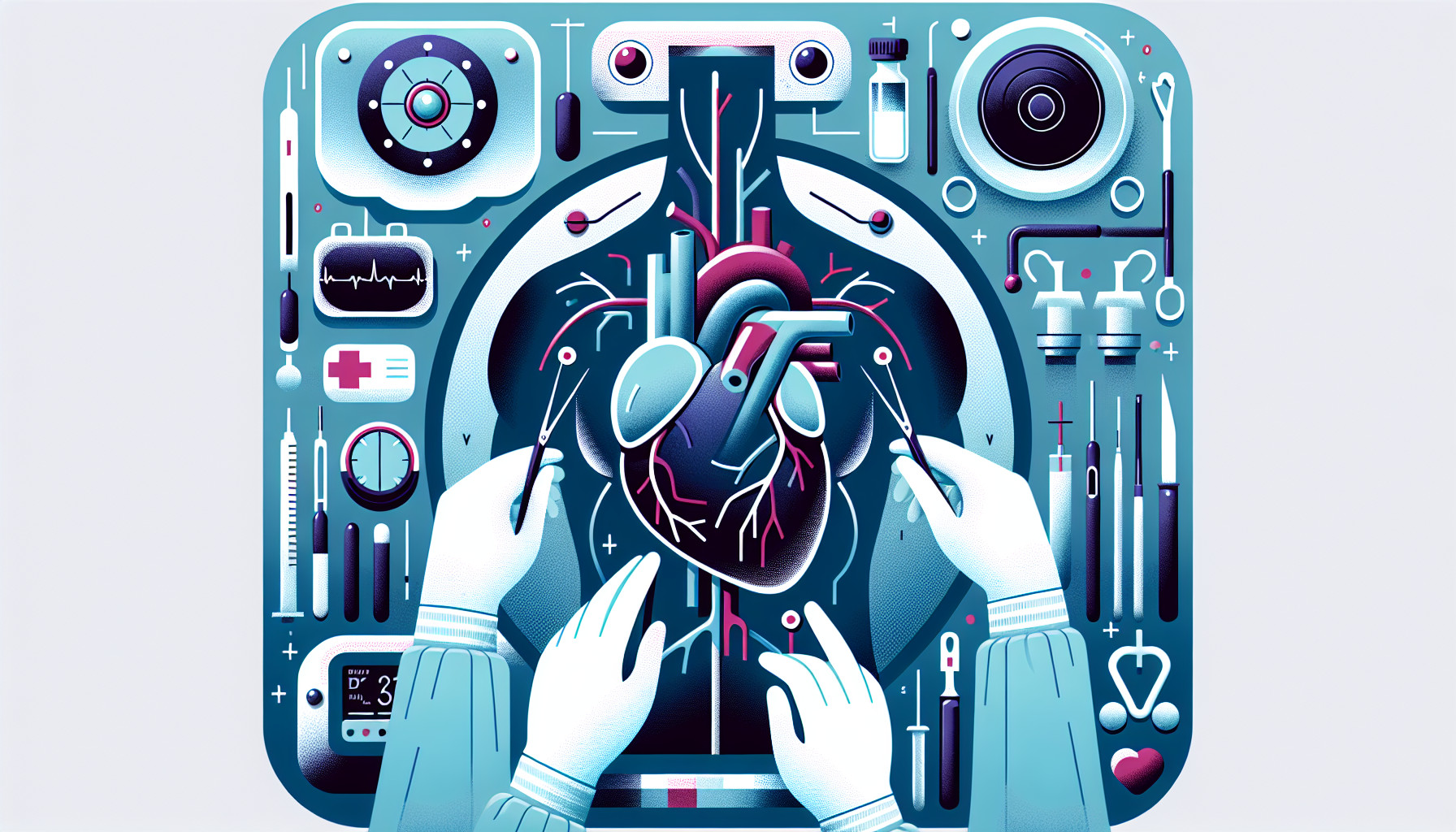Our Summary
This research paper is about an updated analysis of previous studies comparing two types of heart bypass surgery: off-pump and on-pump coronary artery bypass grafting (CABG). The authors looked at studies published after 2000 that involved at least 100 patients.
They found that the off-pump CABG procedure, where the heart is not stopped and a heart-lung machine is not used, significantly reduces the short-term risk of stroke compared to the on-pump CABG procedure, where the heart is stopped and a heart-lung machine is used.
However, they also found that patients who had the off-pump procedure were more likely to need another heart procedure later on. Plus, the off-pump procedure may increase the risk of death in the long term. Therefore, while off-pump surgery does have some benefits, it also has some significant drawbacks.
FAQs
- What were the key findings of this updated analysis on heart bypass surgeries?
- Does the off-pump coronary artery bypass grafting (CABG) procedure have a lower short-term risk of stroke compared to the on-pump CABG procedure?
- What are the potential long-term risks associated with the off-pump CABG procedure?
Doctor’s Tip
A helpful tip a doctor might give a patient considering coronary artery bypass surgery is to carefully weigh the risks and benefits of both off-pump and on-pump procedures. It is important to discuss with your healthcare provider about which procedure may be best for you based on your individual health needs and overall risk factors. Additionally, maintaining a healthy lifestyle, including regular exercise and a balanced diet, can help improve the success of the surgery and reduce the risk of future heart issues.
Suitable For
Patients who are typically recommended coronary artery bypass surgery include those with severe coronary artery disease, particularly those with significant blockages in multiple coronary arteries. These patients may have symptoms such as chest pain (angina) or shortness of breath, or they may have had a heart attack or other serious heart-related events.
In some cases, patients may have tried other treatments such as medication or lifestyle changes but have not seen significant improvement in their symptoms. In these cases, coronary artery bypass surgery may be recommended to improve blood flow to the heart muscle and reduce the risk of future heart-related events.
It is important for patients to undergo a thorough evaluation by a cardiac surgeon and a cardiologist to determine if they are good candidates for coronary artery bypass surgery. Factors such as the location and severity of blockages, overall heart function, and other medical conditions will be taken into consideration when making this decision.
Overall, coronary artery bypass surgery is typically recommended for patients with severe coronary artery disease who are at high risk for heart-related events and who have not seen significant improvement with other treatments. It is important for patients to discuss the risks and benefits of the procedure with their healthcare providers to make an informed decision about their treatment.
Timeline
Before the coronary artery bypass surgery, the patient will typically undergo a series of tests and evaluations to assess their overall health and determine the best course of treatment. This may include blood tests, imaging tests such as an angiogram, and a stress test to evaluate the function of the heart.
During the surgery, the patient will be placed under general anesthesia and the surgeon will make an incision in the chest to access the heart. The surgeon will then take a healthy blood vessel from another part of the body, such as the leg, and use it to bypass the blocked or narrowed coronary artery. The surgeon may use either the on-pump or off-pump technique for the bypass surgery.
After the surgery, the patient will typically spend some time in the intensive care unit to be closely monitored for any complications. They will then be moved to a regular hospital room for further recovery. The patient will need to follow a strict post-operative care plan, including taking medications as prescribed, attending cardiac rehabilitation, and making lifestyle changes to promote heart health.
Overall, coronary artery bypass surgery can be a life-saving procedure for patients with severe coronary artery disease. It can improve blood flow to the heart, relieve symptoms such as chest pain, and reduce the risk of heart attack. However, it is important for patients to be aware of the potential risks and benefits of the different bypass surgery techniques, and to work closely with their healthcare team to ensure the best possible outcome.
What to Ask Your Doctor
- What are the potential short-term and long-term risks associated with both on-pump and off-pump CABG procedures?
- How will the choice between on-pump and off-pump CABG affect my recovery time and post-operative complications?
- Are there any specific factors in my medical history or current health condition that make one type of CABG procedure more suitable for me than the other?
- What is the success rate of both on-pump and off-pump CABG procedures in terms of graft patency and long-term outcomes?
- How experienced is the surgical team with both types of CABG procedures, and what is their success rate with each?
- Are there any specific lifestyle changes or medications I should consider after undergoing either type of CABG procedure to reduce the risk of complications or the need for additional procedures in the future?
- How often will I need follow-up appointments and monitoring after the surgery, and what should I expect in terms of long-term care and management of my heart health?
- Are there any ongoing clinical trials or new advancements in CABG procedures that I should be aware of when making a decision about which type of surgery to undergo?
Reference
Authors: He L, Tiemuerniyazi X, Chen L, Yang Z, Huang S, Nan Y, Song Y, Feng W. Journal: Int J Surg. 2024 Aug 1;110(8):5063-5070. doi: 10.1097/JS9.0000000000001481. PMID: 38626442
